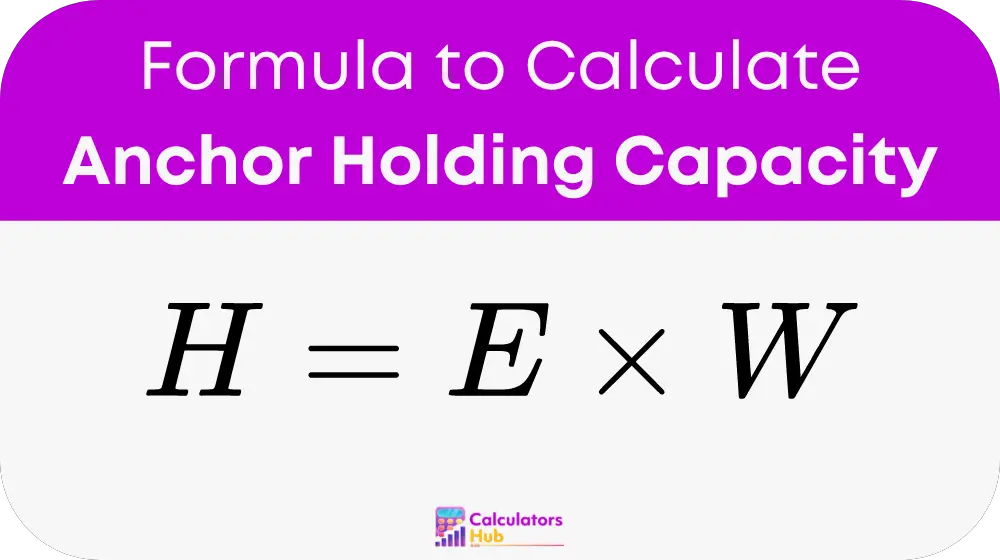The Anchor Holding Capacity Calculator is an essential tool for mariners, engineers, and maritime enthusiasts. It calculates the maximum force that an anchor can withstand under various conditions without dragging. This tool is crucial for ensuring the safety and stability of vessels anchored in different types of seabeds.
Formula of Anchor Holding Capacity Calculator
To accurately estimate the holding capacity of an anchor, consider the following parameters:
- Determine the Type of Seabed: The nature of the seabed (sand, mud, clay, etc.) significantly impacts the anchor's holding capacity.
- Identify the Anchor Type and Characteristics: Different designs and sizes of anchors have varied efficiencies based on their intended use and construction.
- Use the General Formula for Estimating Holding Capacity:

Where:
- Holding Capacity (H): The maximum force the anchor can resist, typically measured in kilograms (kg) or pounds (lbs).
- Anchor Efficiency (E): A factor that depends on the type of seabed and the anchor design.
- Anchor Weight (W): The physical weight of the anchor, typically in kilograms (kg) or pounds (lbs).
Approximate values of Anchor Efficiency (E) for different seabed types might look like this:
- Sandy seabed: E = 10 to 20
- Muddy seabed: E = 5 to 15
- Clay seabed: E = 15 to 30
These values can vary based on specific conditions and detailed design factors of the anchor.
Table of Anchor Efficiency by Seabed Type
Here's a helpful table summarizing the typical anchor efficiency values for different seabed types, facilitating quick estimations:
| Seabed Type | Efficiency Factor (E) |
|---|---|
| Sandy | 10 to 20 |
| Muddy | 5 to 15 |
| Clay | 15 to 30 |
This table allows users to quickly reference efficiency values without delving into complex calculations, streamlining the process of estimating anchor holding capacity.
Example of Anchor Holding Capacity Calculator
For instance, consider a vessel equipped with a 50 kg anchor designed to be used in a sandy seabed:
- Anchor Weight (W) = 50 kg
- Efficiency Factor for Sandy Seabed (E) = 15 (mid-range value)
Using the formula:
- Holding Capacity (H) = 15 * 50 = 750 kg
This example illustrates how the calculator determines that the anchor can safely hold up to 750 kg under optimal conditions on a sandy seabed.
Most Common FAQs
Calculating anchor holding capacity is vital to ensure that the anchor can securely hold the vessel in place under various environmental conditions, preventing drifting and potential accidents.
Seabed composition affects the penetration and grip of the anchor. For instance, anchors hold better in clay than in sandy seabeds due to the denser material which provides greater resistance.
While an anchor can function in various seabed types, its efficiency varies. It's important to choose an anchor type and size suitable for the most common seabed conditions encountered.